
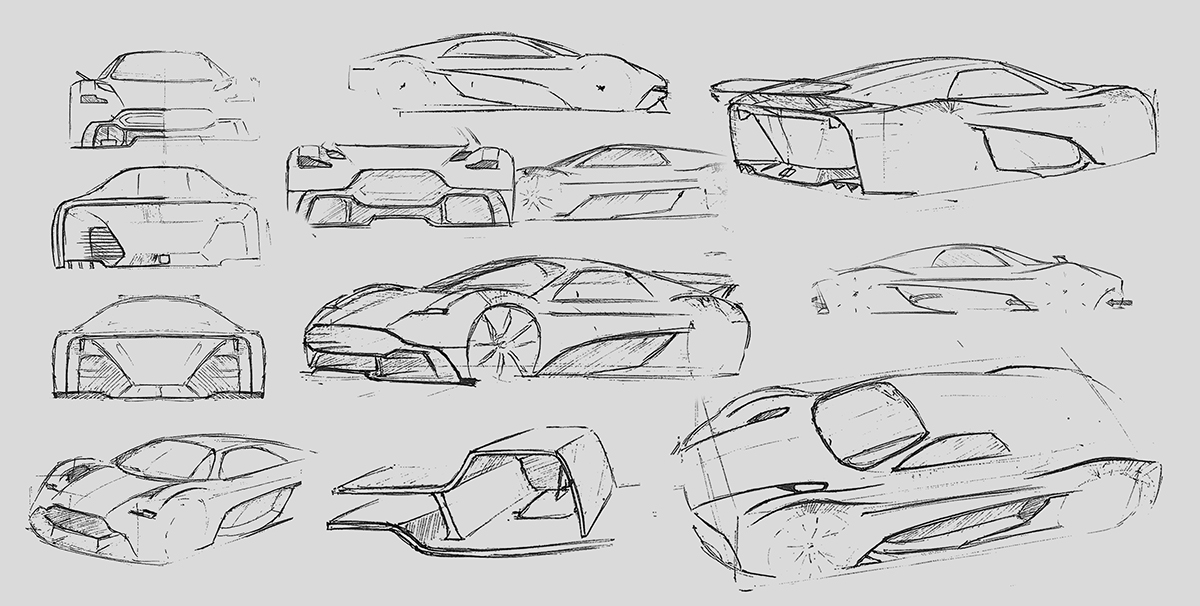
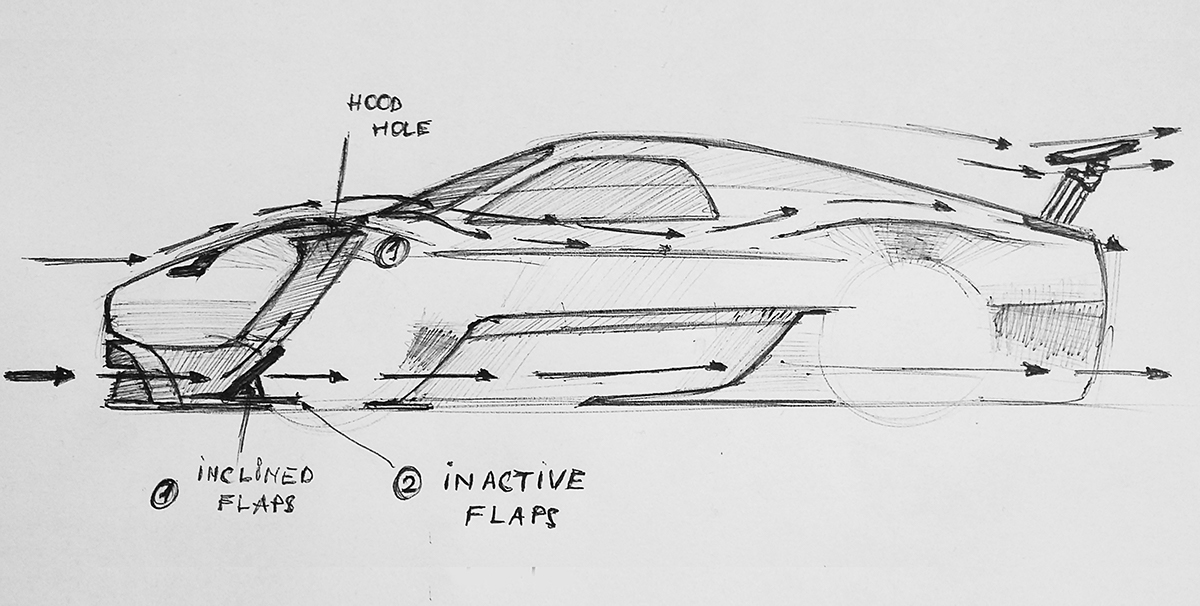
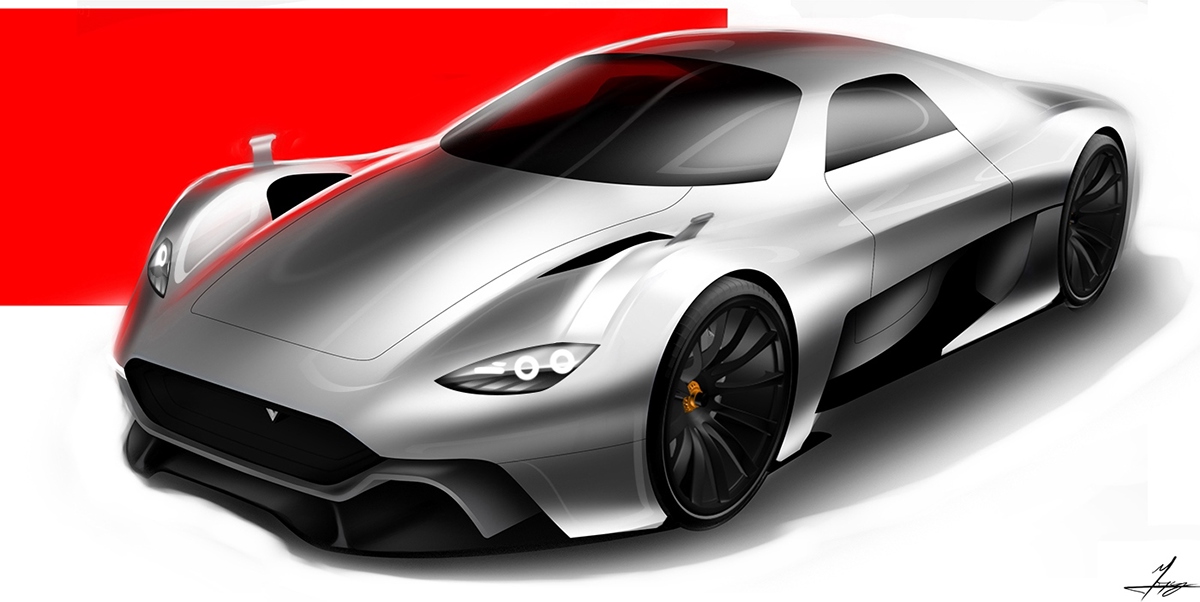
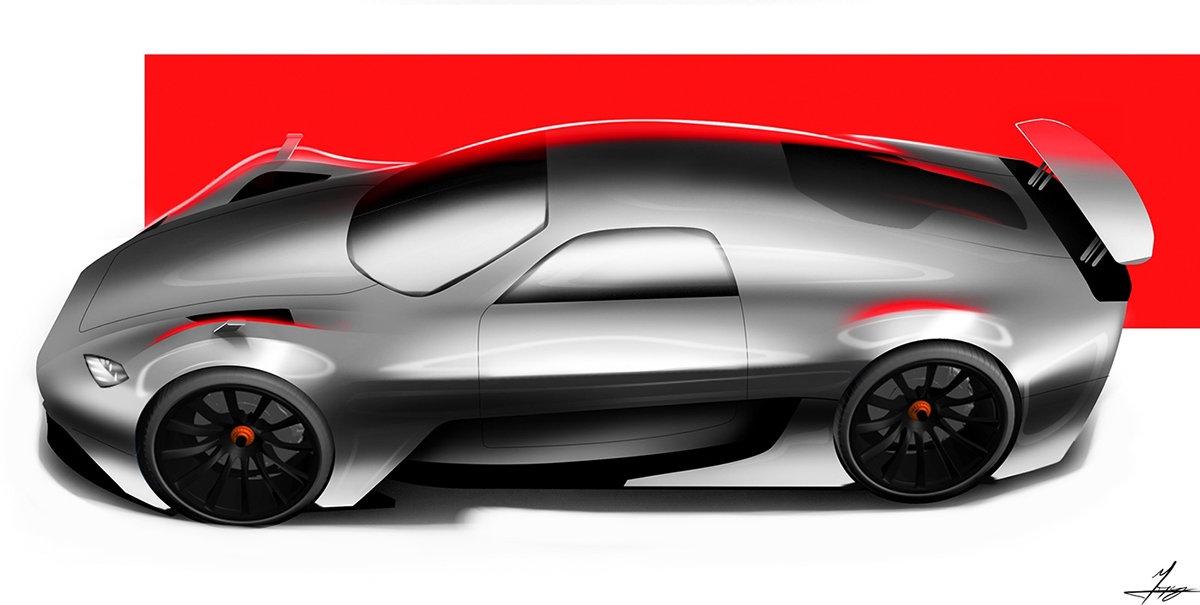
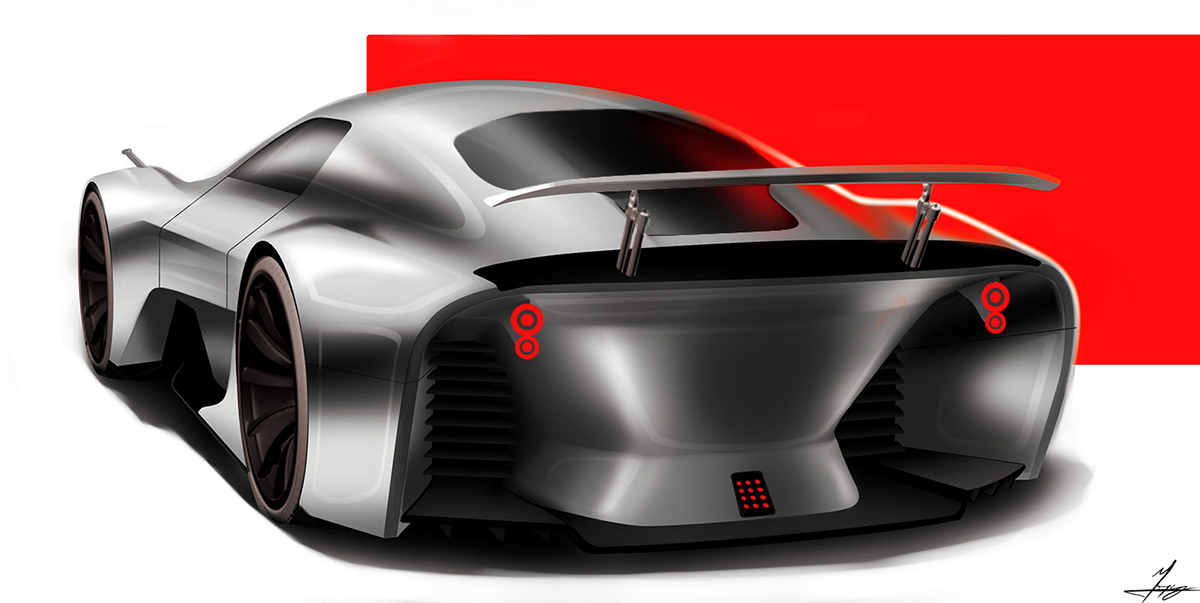
Anatomy
Model H is powered by 6 electric motors, 2 for the front wheels and 4 for the back wheels. The graphene batteries are placed beneath the floor, more to the car’s front for a better weight balance. In terms of systems, Model H has a Bosch ESP System especially calibrated for its profile. The car also has an Anti-Lock Braking System and an Engine Controll Unit. The carbon fiber cockpit is center mounted for a better weight distribution and it is covered with a Gorilla Glass windshield. The A pillars are designed for racing purposes, being placed on the sides of the cockpit so the driver could have a better view through the windshield. The remaining components are linked by 2 (front and rear) aluminium subframes.
Aerodynamics
From an aerodynamic perspective, the concept has a full lenght floor diffuser that channels the air on the car's floor as it creates a massive amount of downforce. The front vents contain a set of flaps that are hidden inside, allowing the air to flow in different ways. Depending on the inclination, they create brake force, the air being channeled upward and evacuated through hood's holes. The active rear wing has a major role when it comes to handling this car: it creates downforce or brake force and increases the air flow arrangement.
Design
The Model 3 was a great source of inspiration in terms of body design, having flowing lines that define the shoulders and the sides. -Because it is a race based-model, the car has many vents, splitters, wings and oppenings that show power and aggressiveness. The sports car character is also shown through the formula one rear light design and the video cameras that are replacing the usual mirrors, in which case the images are sent on two screens beside the steering wheel, so the driver won't turn his head to look left or right


